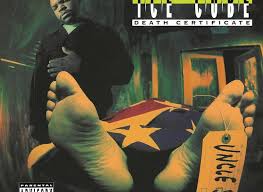Trump’s main defense is that he can’t be tried because he’s not in office anymore.
By Paul Blumenthal | HuffPost
Former President Donald Trump’s legal defense against his second impeachment is filled with “absurd constitutional arguments,” Rep. Jamie Raskin (D-Md.), the lead House impeachment manager, reportedly told fellow Democrats on Wednesday. And Democrats are prepared to refute all of them.
The House’s 80-page brief filed with the Senate on Tuesday includes advance rebuttals of every one of the Trump team’s arguments for the trial, which is set to begin next week.
Democrats forcefully rejected the argument that a former president cannot be impeached or tried after leaving office, which will likely be Trump’s central defense. They dismissed the claim that he was simply engaging in free speech, another argument made by Trump’s team. Democrats refuted the argument that Trump did nothing wrong ― as he still claims in his legal filing ― when he ordered his supporters to march on the U.S. Capitol as Congress met to count the electoral votes securing President Joe Biden’s win on Jan. 6.
The House brief contains a detailed description of the events that led up to Jan. 6 and the president’s involvement in inciting the insurrection at the Capitol, but those facts are difficult to dispute. They were broadcast live on television and social media platforms by both the press and the insurrectionists themselves. Many lawmakers were there when it happened.
More complex, though, are the rebuttals of the legal and constitutional issues that Republicans are likely to lean on to acquit the president. Already, many GOP lawmakers have suggested the entire trial should be dismissed.
House Democrats are prepared for those arguments, too. Here’s how they plan to dismantle them.
Ex-Presidents Can’t Be Tried
Trump’s main legal defense is that presidents cannot be impeached or tried once they leave office. Since he cannot be removed from office through impeachment, he cannot be barred from future office, they also argued.
Trump’s lawyers say that “removal from office by the Senate of the President is a condition precedent which must occur before, and jointly with, ‘disqualification’ to hold future office,” and since Trump is no longer in office, such a punishment is “irrelevant to any matter before the Senate.”
The House impeachment brief contains a 25-page rebuttal of the argument that ex-presidents cannot be impeached and tried. This is the longest section of the House brief. And it specifically anticipates that this attempt to dismiss the impeachment trial will be Trump’s main strategy, given “the overwhelming strength of the case against him.”
It begins by describing the context by which the Constitutional Convention viewed impeachment at the time that the provision was added to the U.S. Constitution. This context is important as it reveals that the Framers of the Constitution presumed that impeachment would apply to former officials, as it did in England and some of the states of the soon-to-be-formed Union.
During the debate over language in the Constitution, Virginia’s George Mason raised the impeachment in England of former Governor General of Bengal Warren Hastings. This high-profile impeachment case was well-known in the former colonies of the British Empire, and it would have been equally well-known among the convention attendees that Hastings was impeached after he left office. When Mason raised this example, no one objected.
The Framers also argued that the point of the impeachment power was to prevent a president from using corrupt means to stay in office or overturn the results of an election.
“The Executive ought … to be impeachable for … Corrupting his electors,” statesman Gouverneur Morris said.
“By necessity, this kind of misconduct would usually occur near the end of a President’s term in office,” the House brief states. “Given their intense focus on danger to elections and the peaceful transfer of power, it is inconceivable that the Framers designed impeachment to be virtually useless in a President’s final days, when opportunities to interfere with the peaceful transfer of power would be most tempting and dangerous.”
Impeachment was also designed by the Framers as a deterrent to corrupt behavior by the president. William Davie called it “an essential security for the good behaviour of the Executive,” and James Iredell said it “will be not only the means of punishing misconduct, but it will prevent misconduct.”
But if impeachment could be so easily avoided by a corrupt or lawless president simply resigning from office or committing their crimes at the end of their term, then the impeachment power would have no such deterrent effect.
“The Framers did not commit such a glaring blunder,” the House Democrats’ brief states. “To protect the Republic, they designed the impeachment power to cover anyone who engaged in abuse or corruption while entrusted with public office — thereby ensuring that any wrongdoer’s ‘infamy might be rendered conspicuous, historic, eternal, in order to prevent the occurrence of likely offenses in the future.’”
The Constitution’s Framers were also informed by the constitutions of the various states and how they treated impeachment. In several states, the executive was impeachable only after he had left office. In Virginia, for example, Thomas Jefferson was impeached (and ultimately acquitted) after he left office as governor. By making the president impeachable while still in office, the Framers sought to enact a more expansive impeachment power.








